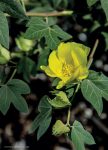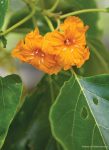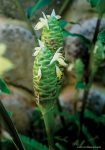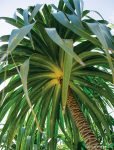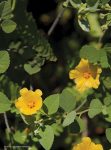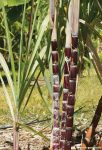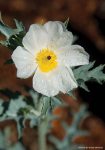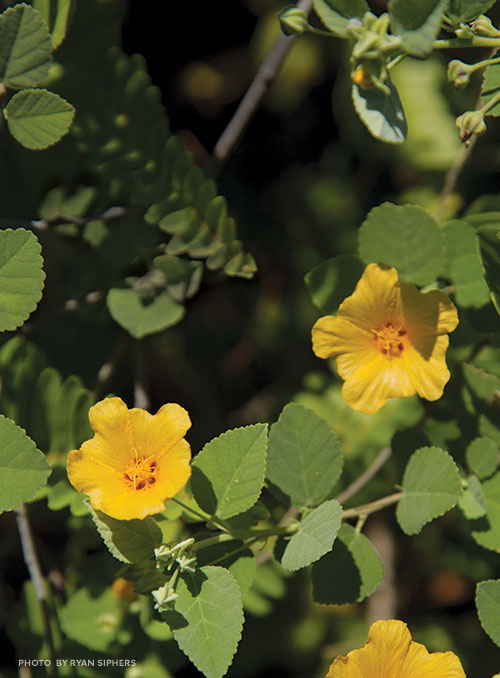 ‘ILIMA
‘ILIMA
Sida fallax, a hibiscus
By and large, the story of native Hawaiian plants is a tale of losing ground to aggressive alien species, the trampling and teeth of introduced animals, and the gradual loss of cultural meaning. Bright, dusky-orange ‘ilima is an exception; it’s actually listed as “a common plant found on all of the Hawaiian Islands.” I know it as the tiny, glowing flowerheads that nod hello from the driest edges of southwestern Maui. Miraculously, Indian Axis deer — an introduced plague — won’t eat ‘ilima, even in those parched areas where they have munched the life out of every other remaining plant.
Sometimes it grows low to the ground (‘ilima papa) and sometimes it is a spindly but hardy bush. Pre-contact, ‘ilima was also the name for the flat land near a village, and the plants there of the same name were carefully tended as a source of flowers for lei — which sounds breezy and easy until you learn that it takes 500 to 1,000 ‘ilima flowers to make one, single strand! The ali‘i (chiefs) favored the red and yellow flowers in their lei ‘ilima, so much like the bright tones of their treasured feather lei. The flower’s shades had names — kuakea for light yellow, ‘ilima lei for deep gold, ‘ilima ‘ula‘ula for bronze and ‘ilima kolī kukui for rusty red — a distinction that tips you off to the value of, and affection for, this plant.
Hawaiians also kept ‘ilima near the family compound for its purgative and medicinal qualities. Sturdy, velvety ‘ilima leaves were the toilet paper of Old Hawai‘i, and crushed blossoms were given to new babies to stimulate their first, well, poops. Similarly for adults, ‘ilima sap and warm seawater went up there to encourage (ahem) things to come out. Women in labor drank a slimy concoction of pounded flowers to help ease childbirth.
While one source says that ‘ilima treated “general weakness,” I myself admit to a general weakness for the plant, stubbornly growing out there in the kīpuka (oases) of the lava fields — little gold and orange sparks, which are fortunately still common.

